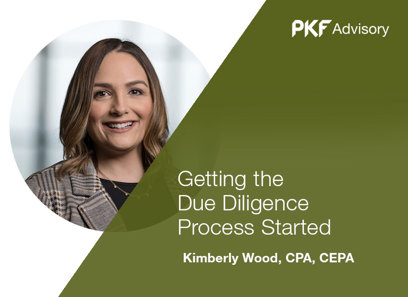Explore Why Understanding Purchase Price Allocation Is Essential
Explore Why Understanding Purchase Price Allocation Is Essential
Blog Article
A Comprehensive Overview to Understanding Purchase Price Allocation in Mergers and Acquisitions
Comprehending Purchase Price Allocation (PPA) is critical in the world of mergings and acquisitions, as it straight influences economic coverage and critical decision-making. By precisely distributing the purchase cost amongst identifiable possessions and obligations, organizations can ensure conformity with audit criteria while enhancing their economic end results. This overview offers a complete assessment of the methodologies and best techniques connected with PPA, clarifying its value in M&A transactions. The complexities of efficient allocation often elevate much more questions than they answer, motivating a deeper expedition into the variables that influence effective execution.
Definition of Purchase Price Allocation

The PPA procedure generally begins with the identification of the procurement day, after which the acquirer must identify the overall purchase price. This overall includes not only money repayments yet additionally any kind of contingent factor to consider, supply transfers, and obligations presumed. The next step entails alloting this acquisition rate to the reasonable value of each identifiable asset and liability, which can consist of property, tools, intellectual home, and other abstract properties.
Additionally, any excess acquisition cost beyond the fair worth of recognizable net assets is classified as goodwill. Accurate PPA is important as it influences monetary reporting, tax effects, and future earnings forecasts. By adhering to relevant bookkeeping requirements, such as IFRS 3 or ASC 805, business make sure conformity and openness in economic reporting, which is important for stakeholders and financiers.
Significance of PPA in M&A
Precise purchase rate allotment (PPA) plays a considerable duty in mergers and procurements, influencing numerous aspects of the deal's economic and operational results. Appropriately performed PPA makes certain that the purchase price is appropriately distributed amongst the identifiable possessions gotten and liabilities presumed, giving a clear picture of the financial investment's worth. This allocation is critical for monetary coverage and compliance with audit requirements, as it straight impacts the acquirer's balance sheet and revenue declaration.
Furthermore, PPA has ramifications for tax obligation factors to consider. By accurately identifying intangible possessions and their corresponding values, firms can maximize amortization schedules and tax obligation deductions, ultimately influencing their cash flow. Additionally, a well-structured PPA can enhance the understanding of synergies expected from the purchase, guiding tactical decision-making post-acquisition.
In the competitive landscape of M&A, reliable PPA can also help with arrangements, as it provides quality and transparency pertaining to the valuation and well worth of the target firm. This accuracy can cultivate trust fund among stakeholders and contribute to smoother assimilation processes. Ultimately, the significance of PPA in M&A can not be overstated, as it lays the structure for sound monetary administration and calculated development campaigns complying with the purchase.
Trick Parts of PPA
A detailed understanding of the crucial elements of purchase price allocation (PPA) is important for successfully handling the complexities of mergings and procurements. The main elements of PPA consist of the recognition of the acquisition cost, the fair worth evaluation of gotten properties and liabilities, and the succeeding category of these components.
Originally, the acquisition rate represents the total consideration transferred by the acquirer, consisting of money, supply, and other forms of compensation. Next off, the fair value of obtained recognizable properties and responsibilities should be identified, which commonly includes concrete assets such as home and tools, along with intangible possessions like trademarks, licenses, and customer partnerships. Precise valuation is crucial, as it influences financial coverage and tax ramifications.
Additionally, responsibilities assumed in the deal, Understanding PPA Allocation consisting of contingent obligations and debt, must be assessed at fair worth. The difference between the complete purchase cost and the fair worths of identifiable possessions and responsibilities leads to a good reputation, which reflects the costs paid for harmonies and capabilities not individually recognizable. Understanding these elements ensures compliance with accountancy standards and enhances tactical decision-making throughout the M&A procedure.
Techniques for PPA
Various methods are used to perform purchase rate allowance (PPA), each offering distinctive approaches to valuing acquired possessions and obligations - Understanding Purchase Price Allocation in Mergers and Acquisitions. One of the most typical methods include the price strategy, market method, and revenue strategy
The price method concentrates on the substitute expense of the properties, approximating what it would certainly require to recreate the property in its existing problem. This approach is specifically valuable for substantial properties, such as residential or commercial property and equipment.

The income technique, on the other hand, stresses today value of future capital anticipated to be produced by the properties. This technique is particularly appropriate for intangible properties, such as patents and trademarks, where future efficiency can be forecasted.
Selecting the ideal method rests on the nature of the gotten possessions, market problems, and the particular context of the purchase. Employing a combination of these techniques may also generate a more detailed view of the reasonable value of the assets and responsibilities involved.
Ideal Practices for Effective PPA
Just how can organizations guarantee a smooth acquisition rate appropriation (PPA) process? Organizations must develop a clear structure that defines roles and obligations throughout the PPA procedure.
2nd, organizations need to collect comprehensive and trustworthy information connected to the acquired assets and obligations. This entails conducting extensive due persistance to examine reasonable worth and audit implications accurately. Utilizing third-party appraisal experts can enhance objectivity and guarantee adherence to appropriate bookkeeping requirements.
Furthermore, it is important to maintain open lines of communication among all celebrations included. Routine meetings can help with the exchange of insights and address any possible disparities early while doing so.
Lastly, companies need to record all assumptions, methods, and findings thoroughly. This not only help in conformity however likewise functions as a recommendation for future acquisitions - Purchase Price Allocation. By following these finest techniques, organizations can enhance the performance and performance of their PPA procedure, inevitably supporting far better monetary reporting and calculated decision-making
Conclusion
In verdict, Purchase Price Allocation (PPA) is a crucial process in mergers and acquisitions that makes sure accurate assessment of recognizable assets and obligations. Reliable PPA not only enhances economic coverage and tax ramifications yet also enhances the critical foundation of the acquiring entity.
Report this page